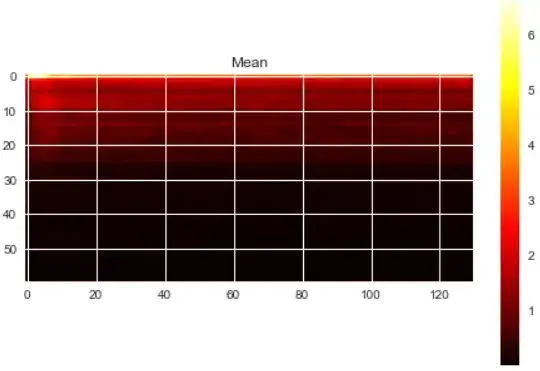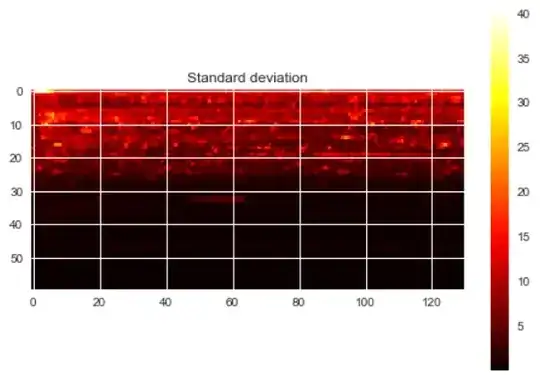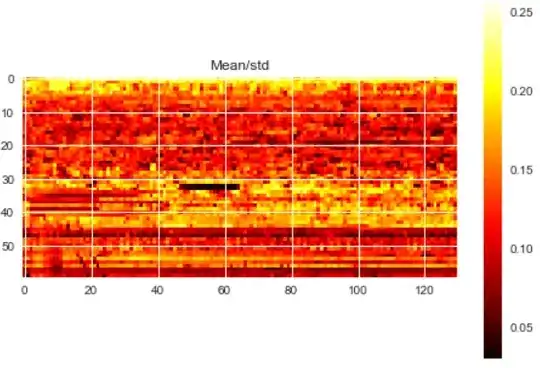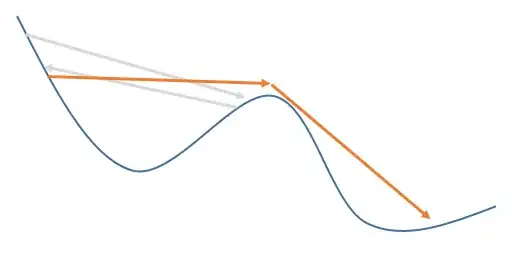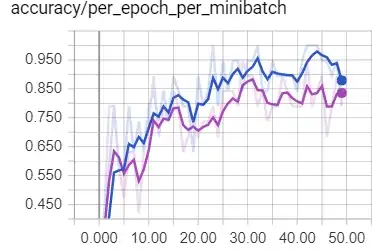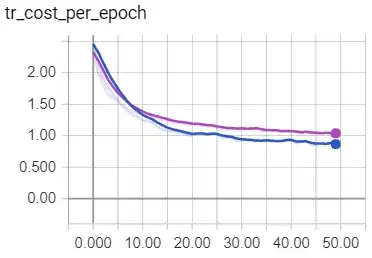I am training a neural network for audio classification. My inputs are "1-channel images" of size 60x130x1.
Surprisingly, I always get better accuracy when training the model with the original data, instead of with the normalized input data (mean = 0 , variance = 1).
This is how I normalize it:
mean = np.mean(X_train, axis = 0)
std = np.std(X_train, axis = 0)
X_train = (X_train-mean)/std
X_test = (X_test-mean)/std
X_val = (X_val-mean)/std
---------------------------------------------------------EDIT 1 ----------------------------------------------------------------
Some relevant values of my training data are:
Min and Max values (across training examples): 0.0 , 1954.4
Min and Max values of the mean (across training examples): 0.0023, 6.7611
Min and Max values of the std (across training examples): 0.0204 , 39.0361
---------------------------------------------------------EDIT 1 ----------------------------------------------------------------
Does this makes any sense, or normalized inputs should always give better results? (The purple line corresponds to the normalized data)
Training accuracy / per_epoch_per_minibatch
